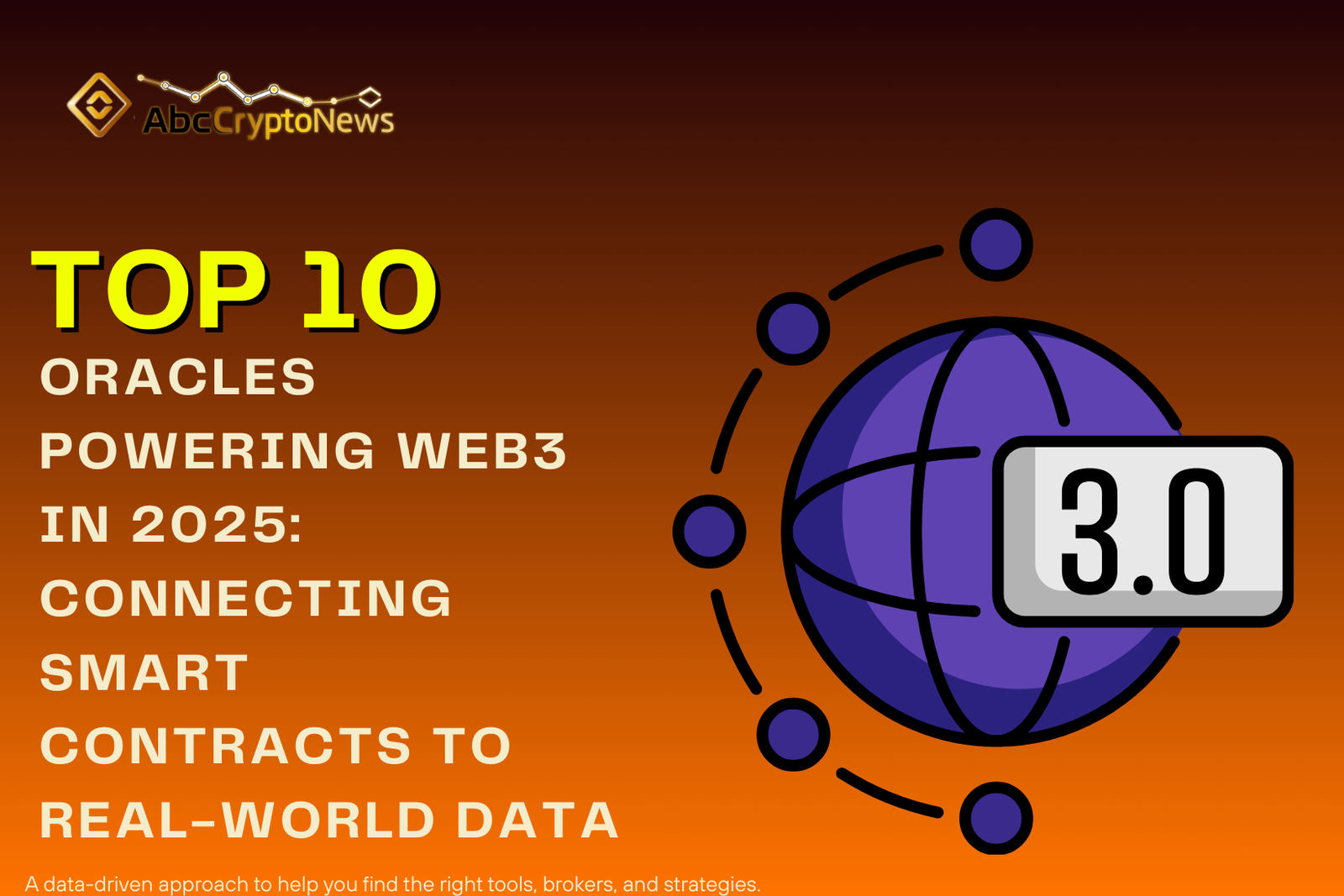Top 10 Oracles Powering Web3 in 2025: Connecting Smart Contracts to Real-World Data
Top 10 Oracles : Oracles are often described as the invisible glue of Web3. Without them, blockchains would remain self-contained systems, unable to interact with the outside world. By design, smart contracts can’t fetch data on their own—they need a trusted bridge. That’s where oracles step in.
In 2025, oracles are no longer a side note in blockchain infrastructure. They’ve become essential across industries: powering DeFi lending platforms with real-time price feeds, triggering insurance payouts based on weather data, enabling dynamic NFTs that change with live events, and helping AI-driven decentralized apps process complex information.
Yet, oracles face what’s called the Oracle Problem—risks around centralization, data manipulation, and reliability. Solving this challenge is critical to the growth of Web3. This article explores the Top 10 Oracles Powering Web3 in 2025, the networks that are pushing decentralized applications closer to real-world utility.
Top 10 Oracles : The Role of Oracles in Web3
Blockchains are secure and transparent, but they lack one thing: awareness of the external world. Oracles make up for that by pulling in data from finance, IoT devices, sports, or even weather stations, and feeding it to smart contracts.
Different types of oracles are shaping the ecosystem:
- Input oracles bring off-chain data onto blockchains.
- Output oracles let smart contracts trigger real-world actions.
- Cross-chain oracles enable communication between different blockchain ecosystems.
- Compute oracles handle resource-heavy calculations outside the blockchain, then deliver results back on-chain.
Their applications are wide-ranging: in DeFi, they secure stablecoins and derivatives; in NFTs and gaming, they make assets dynamic; in insurance, they verify weather or shipping data; and in AI-powered dApps, they ensure privacy-preserving, validated information.
Top 10 Oracles : Key Trends in Oracle Development (2025)
Oracle technology has matured quickly, and in 2025 several trends define its direction:
- Decentralized Oracle Networks (DONs): reducing single points of failure.
- Zero-Knowledge oracles: offering privacy-preserving data verification.
- AI-driven validation: filtering out errors and manipulation in data streams.
- Cross-chain interoperability: enabling a fluid multi-chain ecosystem.
- Enterprise partnerships: connecting logistics, finance, and healthcare to blockchain data layers.
Together, these shifts show oracles aren’t just infrastructure—they’re a foundation for the next wave of decentralized innovation.
Top 10 Oracles Powering Web3 in 2025
1. Chainlink (LINK)
The most established oracle network, Chainlink secures billions in smart contracts. It provides price feeds, Proof of Reserves for stablecoins, and the CCIP (Cross-Chain Interoperability Protocol) for bridging chains. In 2025, Chainlink is exploring AI-powered data verification and expanding into tokenized real-world assets.
2. Band Protocol (BAND)
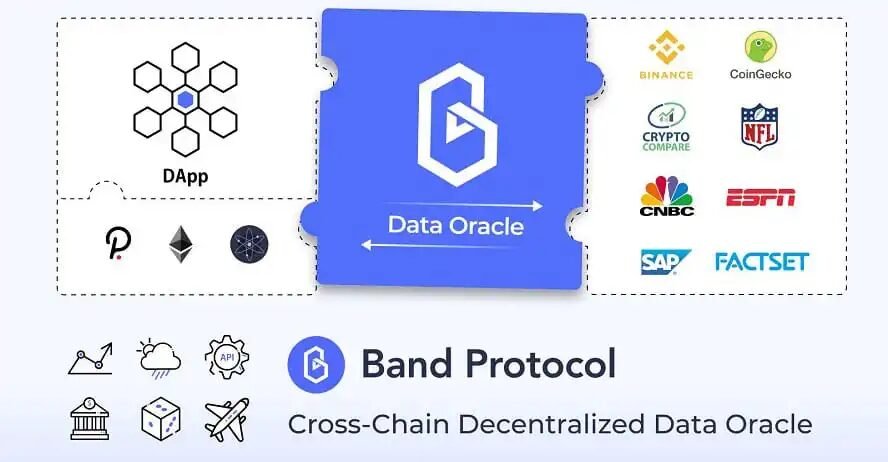
Source: CoinBureau
Built on Cosmos SDK, Band emphasizes multi-chain compatibility and speed. Its adoption across Asia is notable, and in 2025, it’s pushing enterprise integration with faster data querying systems.
3. API3 (API3)
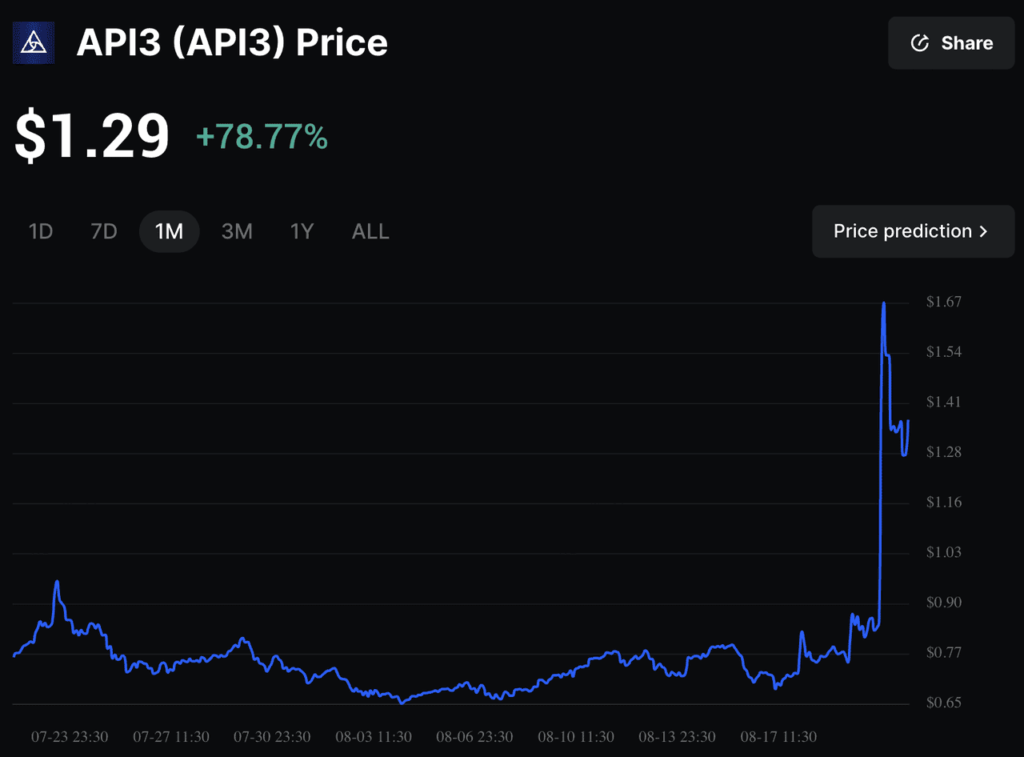
Source: BingX
Known for first-party oracles, API3 lets data providers run their own nodes through Airnode technology. This direct model strengthens data integrity. By 2025, API3 is securing major partnerships with Web2 data firms, bridging traditional APIs with Web3 ecosystems.
4. Witnet (WIT)

Source: Coin Market Cap
Decentralization is Witnet’s hallmark. Operated by community nodes, it focuses on financial and crypto price data. In 2025, Witnet’s adoption in insurance protocols highlights its reliability in high-stakes environments.
5. UMA (Universal Market Access)

Source: Pintu
UMA uses optimistic oracles, assuming data is correct unless challenged. This method makes it ideal for derivatives, synthetic assets, and prediction markets. In 2025, UMA is gaining traction in governance and forecasting applications.
6. Nest Protocol (NEST)
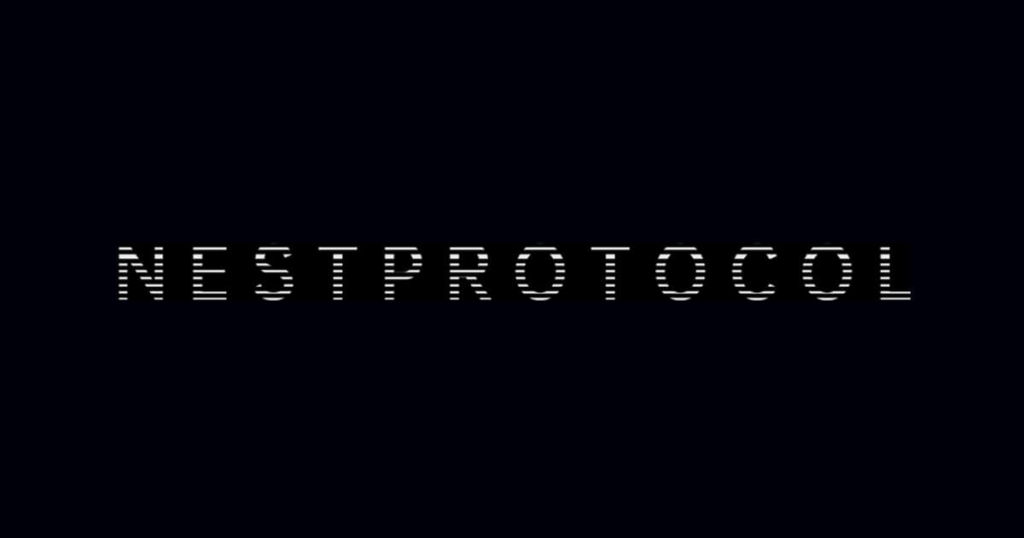
Source: CS
Nest takes a unique approach with quotation mining, where users validate and compete on price submissions. It has found steady adoption in DeFi and, by 2025, is expanding into gaming and prediction platforms that value transparent, peer-driven data.
7. Pyth Network (PYTH)
Backed by exchanges and trading firms, Pyth delivers low-latency financial data, making it ideal for high-frequency trading. In 2025, it’s cementing its role in institutional DeFi, especially derivatives.
8. DIA (Decentralized Information Asset)
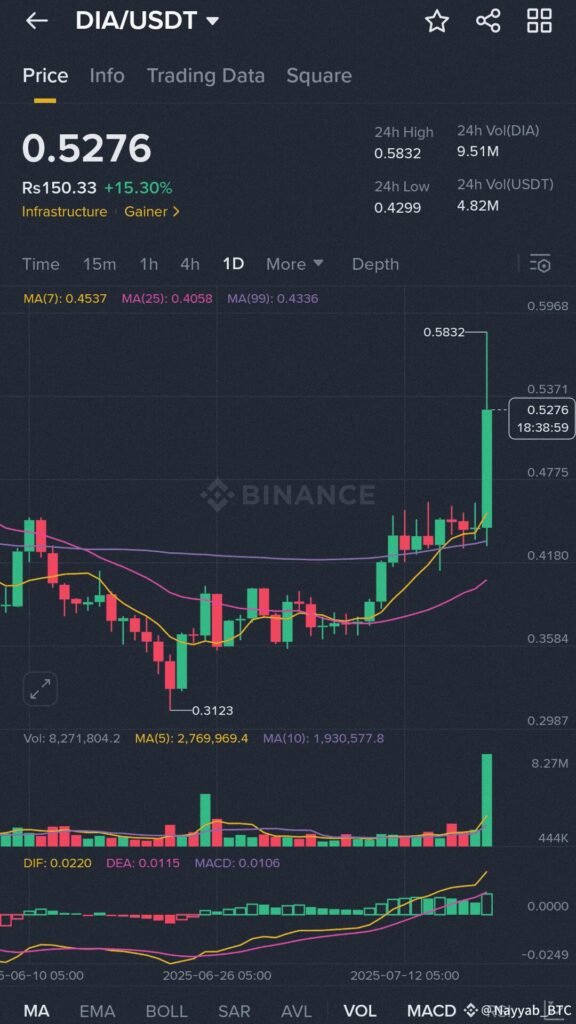
Source: Binance.com
DIA prides itself on transparency and open-source design. It allows communities to audit and verify data. In 2025, DIA is pushing into NFTs and metaverse applications, supplying trusted feeds for dynamic virtual worlds.
9. SupraOracles (SUPRA)

Source: Indodax
Positioned as a high-speed cross-chain oracle, Supra emphasizes speed and scalability. In 2025, it is carving a niche in enterprise AI-powered dApps, providing secure and fast data for next-gen applications.
10. iExec (RLC)
Standing out as a compute oracle, iExec offers decentralized cloud power. It enables AI and machine learning models to run off-chain and still connect with blockchain smart contracts. In 2025, iExec is bridging Web3 with data-heavy industries like healthcare and AI.
Comparative Analysis of Top Oracles in 2025 – Top 10 Oracles
| Oracle | Key Feature | Primary Use Case | 2025 Update | Market Position |
|---|---|---|---|---|
| Chainlink | Largest DON, CCIP | DeFi, RWA, cross-chain | AI + tokenization | #1 globally |
| Band | Cosmos-based | Multi-chain DeFi | Enterprise adoption | Strong in Asia |
| API3 | First-party data | Direct APIs | Web2 data partnerships | Rising competitor |
| Witnet | Decentralized nodes | Price feeds | Insurance & DeFi growth | Niche adoption |
| UMA | Optimistic oracle | Dispute resolution | Prediction markets | Expanding |
| Nest | Quotation mining | DeFi price feeds | Gaming, prediction apps | Stable presence |
| Pyth | Low-latency data | Trading & derivatives | Institutional DeFi | Growing rapidly |
| DIA | Transparent feeds | NFTs, metaverse | Web3 integration | Community-driven |
| Supra | High-speed cross-chain | DeFi & AI | Enterprise AI oracle | Emerging leader |
| iExec | Compute oracle | AI + off-chain computing | AI/ML workloads | Hybrid role |
Challenges & Risks in Oracle Adoption – Top 10 Oracles
The promise of oracles comes with challenges. Manipulated feeds can destabilize DeFi markets. Real-time updates strain scalability. Regulations may tighten as oracles handle sensitive data. And while decentralization reduces risks, some oracle networks still face centralization concerns.
Future Outlook of Oracles in Web3 – Top 10 Oracles
The future of oracles looks expansive. AI and blockchain are converging to create predictive analytics tools. Zero-knowledge proofs will secure sensitive data in privacy-first ways. Cross-chain oracles will become standard as ecosystems interconnect. Most significantly, enterprises—from logistics to insurance—are embracing oracles for real-world asset tokenization and transparent operations.
Conclusion
Oracles may run quietly in the background, but they are the lifelines of decentralized applications. The Top 10 Oracles Powering Web3 in 2025: Connecting Smart Contracts to Real-World Data illustrate just how far this space has come, with Chainlink leading the charge and rising players like Supra and iExec shaping new possibilities.
As Web3 matures, oracles will remain indispensable—ensuring that smart contracts not only run securely but also interact seamlessly with the world we live in.

